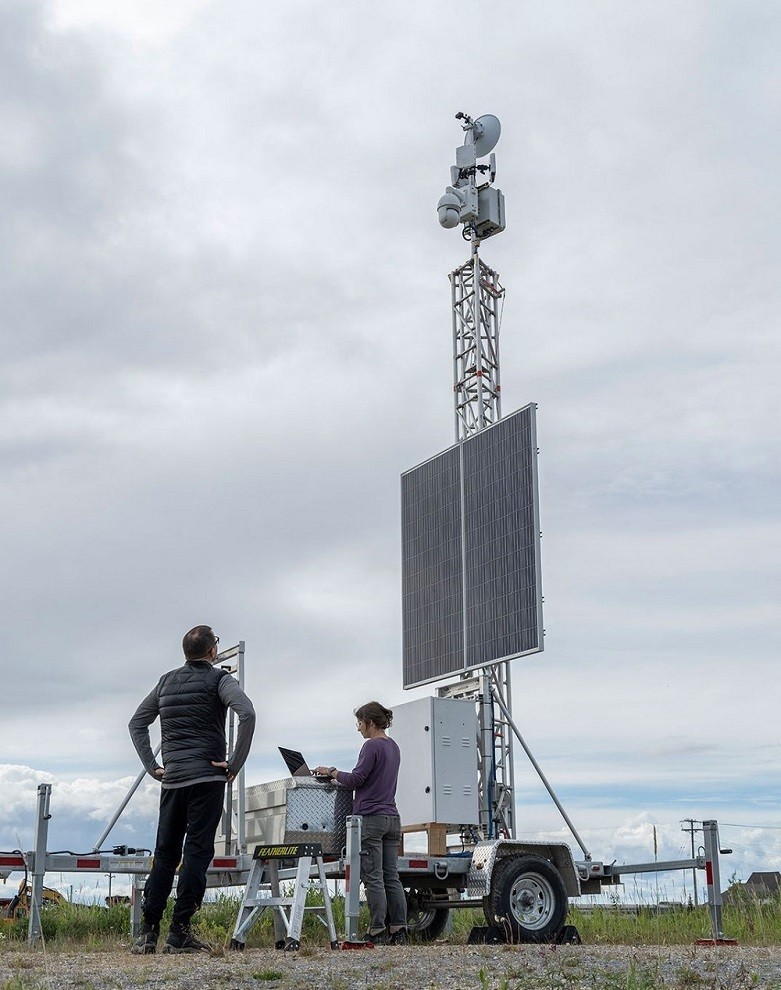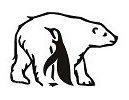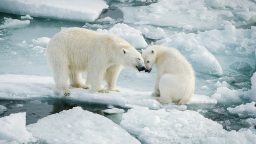
Researchers are using novel technologies to study polar bears. Kieran McIver / Polar Bears International
Polar Bear Walking
When they’re born, polar bears are toothless and blind, and they weigh roughly a pound. But over time—thanks to lots of fat-rich milk and protection from their mother—these helpless cubs grow to become large, powerful predators that are perfectly adapted for their Arctic environment.
Though temperatures can dip to minus 50 degrees Fahrenheit in the winter, the massive marine mammals—which live in Canada, Norway, Russia, Greenland and Alaska—stay warm with a thick layer of body fat and two coats of fur. Their huge paws help them paddle through the icy water and gently walk across sea ice in search of their favorite meal, seals.
Their size, power, intelligence and environmental adaptions have long intrigued humans living in the north, including many Indigenous communities, such as the Inuit, the Ket and the Sámi. Biologists are curious about Ursus maritimus for many of the same reasons.
Today, researchers and conservationists want to know about these highly specialized marine mammals because human-caused climate change is reshaping their Arctic habitat. The bears spend much of their time on sea ice hunting for seals.
But as temperatures in the Arctic rise, sea ice is getting thinner, melting earlier in the spring and forming later in the fall. Pollution and commercial activity also threaten the bears and their environment. An estimated 26,000 polar bears roam the northern reaches of the world, and conservationists worry they could disappear entirely by 2100 because of global warming.
But investigating mostly solitary creatures who spend much of their time wandering around sea ice, in some of the most remote and rugged places on the planet, is expensive, logistically challenging and dangerous to researchers. For help, scientists are turning to technology.
Tracking devices

Scientists are testing radar systems to detect polar bears. Erinn Hermsen / Polar Bears International
When humans and polar bears meet, the encounters can often end in tragedy—for either the bear, the human or both. Conflict doesn’t happen often, but global warming is complicating the issue. Because climate change is causing sea ice to form later in the fall and melt earlier in the spring, the bears are fasting longer. And, with nowhere else to go, they’re also spending more time on land in the Arctic.
To prevent human-bear encounters, scientists are developing early-warning radar detection systems they’ve nicknamed “bear-dar” to help alert northern communities when a bear is getting close. They use artificial intelligence models that may be able to discern approaching bears. Scientists have tested the systems and are now tweaking the A.I. models to be more accurate.
“We’ve already established that the radar sees everything,” B.J. Kirschhoffer says in a statement. “Being able to see is not the problem. Filtering out the noise is the problem. … Ideally, we can train them to identify polar bears with a high degree of certainty.”
Scientists are highly interested in polar bear dens—that is, the cozy nooks female bears dig under the snow to give birth to cubs—for several reasons. Denning, which occurs each year from December to early April, is the most vulnerable time in the life of youngsters and mothers.
Though they’re accustomed to covering huge amounts of territory to find prey, mother bears hunker down to protect their cubs from the Arctic elements and predators. Studying bears at den sites allows researchers to gather important behavioral and population insights, such as the body condition of mothers and cubs or how long they spend inside the den before emerging.
But finding polar bear dens on the snowy, white, blustery tundra is a lot like finding a needle in a haystack. Historically, scientists have used low-tech methods to find dens, such as heading out on cross-country skis with a pair of binoculars or using dogs to sniff them out. But those options were often inefficient and ineffective, not to mention rough on the researchers.
For the last few years, scientists have been using a technology known as forward-looking infrared imagery, or FLIR. But FLIR is finicky and only works in near-perfect weather—too much wind, sun or blowing snow basically renders it useless. What’s more, if the den roof is too thick, the technology can’t pick up the heat inside. Tom Smith, a plant and wildlife scientist at Brigham Young University, estimates that aerial FLIR surveys are 45 percent effective, which is far from ideal.
But a promising new technology is on the horizon: synthetic aperture radar (SAR). Affixed to an aircraft, SAR is a sophisticated remote-sensing technology that sends out electromagnetic waves, then records the bounce back, to produce a radar image of the landscape below. SAR is not constrained by the same weather-related issues as FLIR, and it can capture a huge swath of land, up to half a mile wide, at a time.
Artificial intelligence

Artificial intelligence helps to get the number of polar bears. Kieran McIver / Polar Bears International
Getting an accurate headcount of polar bears over time gives scientists valuable insights into the species’ well-being amid environmental changes spurred by climate change. But polar bears roam far and wide, traveling across huge expanses of sea ice and rugged, hard-to-reach terrain in very cold environments, which makes it challenging, as well as potentially dangerous and expensive, for scientists to try to count them in the field.
As a result, researchers have taken to the skies, looking for the bears while aboard aircraft or via satellites flying over their habitat. After snapping thousands of aerial photos or satellite images taken from space, they can painstakingly pore over the pictures in search of bears.
A.I. may eventually help them count the animals. Scientists are now training A.I. models to quickly and accurately recognize polar bears, as well as other species of marine mammals, in photos captured from above. For researchers who conduct aerial surveys, which produce hundreds of thousands of photos that scientists sift through, this new technology is a game-changer.
To that same end, researchers are also now testing whether drones work to capture high-resolution images and gather other relevant data. Since they don’t require onboard human pilots, drones are a safer, more affordable alternative to helicopters; they’re also smaller and nimbler, and tend to be less disruptive to wildlife.
Together, these and other technologies are helping researchers learn how polar bears are faring as the climate evolves. This knowledge, in turn, informs conservation decisions to help protect the bears and their environment—and the health of the planet more broadly.
By Sarah Kuta Source It is published with abbreviations.


